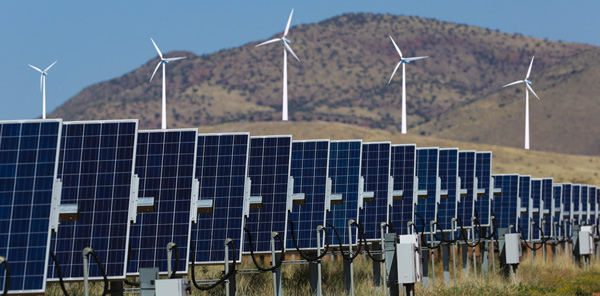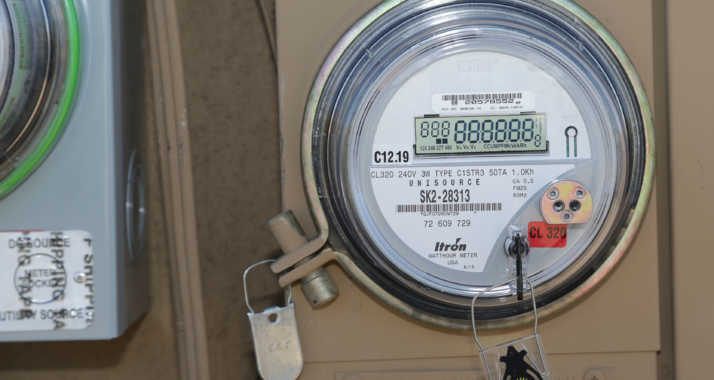FOR IMMEDIATE RELEASE
Mar 25 2015 12:00:00:000AM
News Media Contact: Joseph Barrios, (520) 884-3725, jbarrios@tep.com
TEP Proposes More Equitable Credits for New Solar Power System Users
Tucson, Ariz. — Tucson Electric Power (TEP) has proposed a new net metering plan to ensure that customers who install new rooftop solar power systems pay a more equitable price for their electric service while still enjoying significant bill savings.
Users of rooftop solar power systems rely just as heavily on TEP’s electrical system as other customers — more heavily, even, since TEP must manage their systems’ intermittent output. But they pay far less for TEP service under current rates, due in part to net metering rules that allow them to exchange excess solar energy for free, on-demand utility power.
TEP is proposing instead to purchase excess solar output from new rooftop systems at the same price it pays for energy from large local solar arrays. The resulting bill credits would allow customers to reduce their electric bills by going solar, even as they pay the same price as other customers for the energy they use from TEP.
“Our proposal will allow the continued expansion of southern Arizona’s solar energy resources while preserving safe, reliable and affordable electric service at more equitable prices for all of our customers,” said David G. Hutchens, TEP’s President and Chief Executive Officer.
Customers who go solar under the proposed plan would still enjoy significant savings on their monthly electric bills. Typical residential customers who use 900 kilowatt-hours (kWh) per month and install a 6-kilowatt (kW) array would save more than $80 per month on their average electric bill — about $22 less than they would save under current net metering requirements.
If TEP’s proposal is approved by the Arizona Corporation Commission (ACC), it would not affect customers who already have solar power systems or those whose requests to connect new solar arrays to TEP’s grid are submitted by June 1, 2015.
TEP’s proposal would reduce — but not eliminate — subsidies embedded in current rates that shift the burden of paying for our local electrical system from rooftop solar array users to other customers.
“The generous subsidies provided by current net metering requirements were an effective short-term incentive for a costly, relatively new technology,” Hutchens said. “Now that solar power is far more popular and affordable, we can achieve our renewable energy goals and preserve significant bill savings for solar power users without creating unmanageable cost burdens for our other customers.”
To provide safe, reliable service to customers, TEP must operate, maintain and improve a system of power plants, transmission lines, substations, underground cables and overhead distribution equipment while conducting metering, engineering, customer service and business operations. These costs are largely fixed — that is, they don’t vary with energy usage. But since TEP’s rates recover most of those costs through usage-based charges, customers with rooftop solar arrays don’t pay an equitable share of these costs.
The impact of this solar subsidy was minimal in 2008, when the ACC approved current net metering rules. At that time, fewer than 600 TEP residential customers had rooftop solar systems and large subsidies were necessary to help customers justify the purchase of photovoltaic (PV) arrays that cost more than $8 per watt of system capacity.
PV system prices have fallen steadily since then to less than $3 per watt, driving annual increases in the installation of both customer-owned and leased PV systems. About 7,900 of TEP’s residential customers now have solar power systems, and more than 600 customers have applied already this year to connect new PV arrays to TEP’s grid.
Without changes to TEP’s rates or net metering plan, the continuation of such growth would force significant rate increases to offset increasing subsidies to users of rooftop solar systems.
“We’re exceeding our renewable energy goals, but that won’t mean much if we’re forced to compromise the affordability of our community’s electric service,” Hutchens said. “Our proposed net metering plan would promote both sustainable power and a sustainable electric grid.”
Tucson Electric Power provides safe, reliable electric service to approximately 414,000 customers in southern Arizona. Solar power plays an important part in TEP’s increasingly diverse generating portfolio. The company has approximately 330 MW of total renewable generating capacity, enough to meet the electric needs of about 70,000 homes. For more information, visit tep.com.






